“Sorry I’ve been taking so long! The questions are pretty much done — I kinda got obsessed over them lol,” writes DV Caputo while visiting Tokyo, Japan — a city that provides the New York-based designer and producer with the kinetic stimulus for his projects. For the better part of decade, Caputo has been crafting pulsating original soundtracks for cinematic tenements that draw on a medley of influences. These range from Japanese technopop, drum ‘n’ bass, cyberpunk, to avatar-based online role playing game — colloquially referred to as ‘sim’ — influences, all showcasing his richly textured and multitudinous range of output. Positionalities and senses are crossed and recalibrated as stages with the consonant shifts in composition.
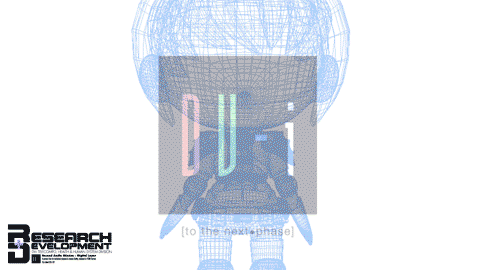
Corresponding with the artist, it becomes clear DV Caputo’s approach is not one structured by vapid use of technofetishist visual and sonic cues, but rather a causal grounding of critical and personal interpretations of transhumanist theory, political and ecological crisis, artificial intelligence, and science fiction, among other things. Spaces are generated in his work to project worlds in the process of becoming, using the current geopolitical climate as a primary foundation for rendering various digitally-mediated modalities.
Having released a number of EPs under the now defunct project Konnichiwa (cofounded with artist Kaela Noel) and his solo moniker DV-i — a nod to the video display interface developed by the Digital Display Working Group — DV Caputo’s process is intentionally performative and interactive. He invites his audience, whether listeners or viewers, to take a moment to reflect on their involvement in a myriad of contested contemporary praxes. Physicality and cognition are placed at the forefront of a field of engaging narratives, which are treated as access points in a purposefully simulated environment navigable by way of genderless avatars, referred to as ‘tans,’ and or empathetic response systems. The 2015 record Aurora Memoria Philosophical Data Session: 2093 (released in partnership with Priz Tats), for example, is set in a hyper-evolved megalopolis ‘Fuji City,’ which draws its spatiotemporal parameters from the accompanying visual novel written by Callie Beusman, as well as the constitutive topologies of dating sims and post-climate change. Caputo’s recordings immediately place the listener into vertiginous fantasy-scapes that are imbricated with labyrinths of meaning, formalized by considerations of corporate identity, artificial intelligence and bioinformatics.
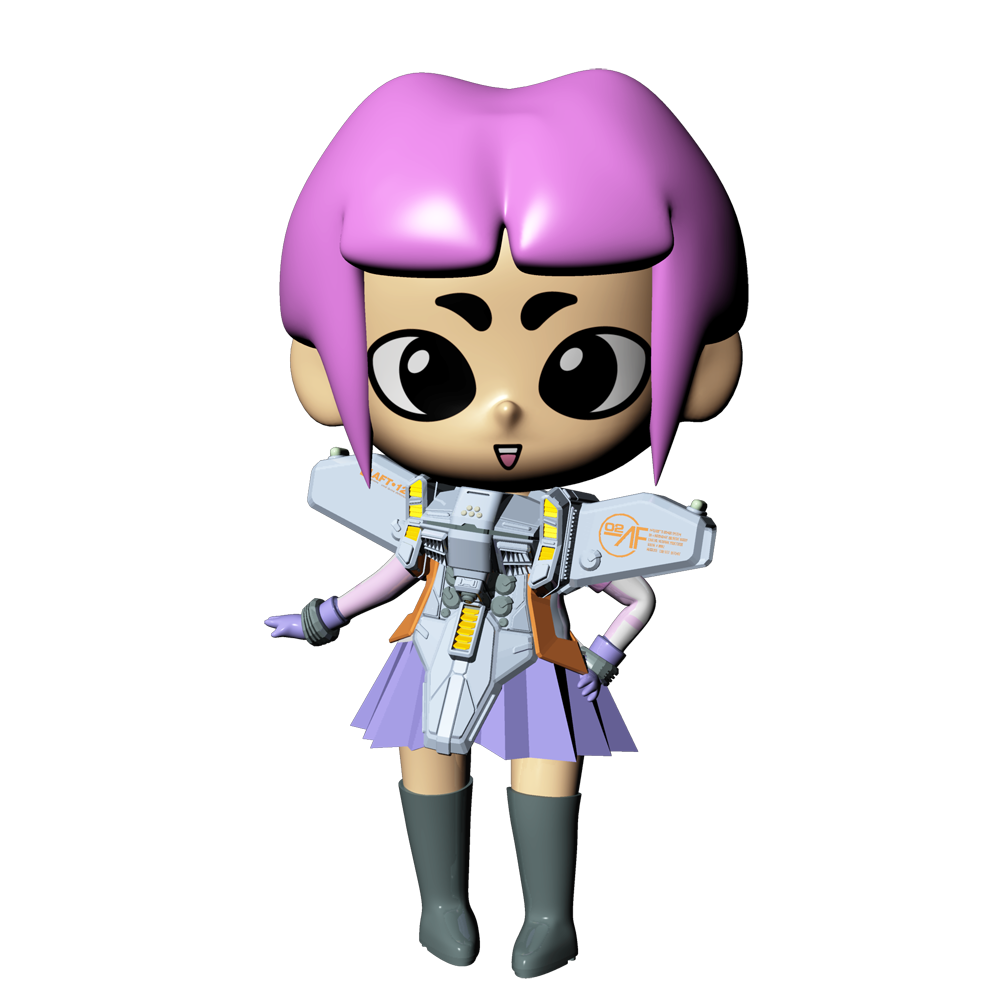
In the course of our conversation, DV Caputo mentions the distinction between a ‘gaijin’ (meaning alien or foreign in Japanese) and a gentrifier, claiming to prefer identifying as the former rather than the latter. In this respect, and while contextualizing his music as architectural units, it’s imperative to consider the world-building aspect of his process. How he’s obliging certain behaviors and movements of visitors and inhabitants in his fabricated worlds is certainly vital toward this understanding. It’s also important to weigh what pretensions and presuppositions these are henceforth formulated. Taken in totality, these abstractions aid in placing the audience in self-reflexive coordinates where DV Caputo himself is neither proprietary orchestrator nor disaffected participant.
Like his recent Maltine Records release, Research + Development, and the accompanying mix for AQNB, each of DV Caputo’s solo and collaborative releases are in themselves schematics for a technology under constant reprogramming — enhancement blueprints for what he terms Rhythmic-Variable Waveform Composite Solutions:
**What is your interest in artificial intelligence?
DV Caputo: My interest in A.I. is definitely from an amateur’s perspective, by way of a loose collection of science fiction and pop philosophy — things like Vernor Vinge’s True Names, Donna Haraway’s ‘Cyborg Manifesto,’ William Gibson’s Idoru, Mamoru Oshii’s Ghost In The Shell anime adaptation, and Ray Kurzweil’s The Age of Spiritual Machines. I’m not only interested in AI within a purely digital space — things like the singularity and the uploading of human consciousness has too much potential to further divide an already heavily-stratified society, especially with the current gatekeepers of this technology at large. It’s really sad, especially considering the hugely positive possibilities of transhumanism.
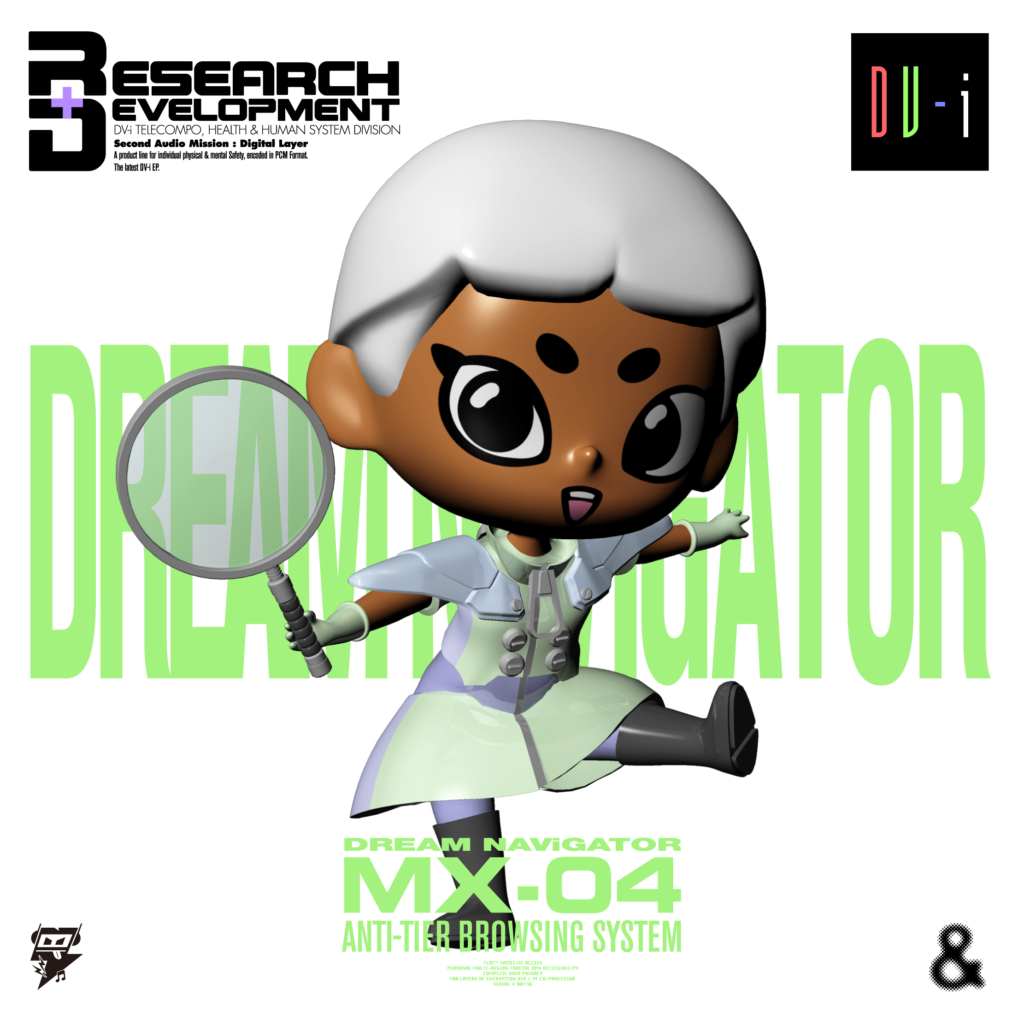
I’m personally far more interested in AI in relation to the possibilities of metaphor and how we imbue meaning into the processes and light that emanate from our computer systems. The same way we make sense of an organized series of pixels and file structures as ‘folders,’ ‘icons’ or ‘desktops,’ our imaginations and human empathy can be extended and manipulated infinitely to a degree that we can infer emotion and soul into a computer’s responses, or even give physicality and personality to an inanimate object.
**How are these represented in your releases?
DV: In terms of Aurora Memoria, the genderless AI character Zeitgeist essentially undergoes a journey of self-actualization as a machine, but those decisions are rendered ambiguous due to the fact that we are only inferring their actualization through Zeitgeist’s human-readable responses. Likewise, the ‘song-tans’ [avatar-based characters tied to each track] of Research + Development, which are inspired by anthropomorphized renditions of Operating Systems (‘OS-tans’), imbue personalities into the songs and products that they are associated with by way of human-readable signifiers like gestures and facial expressions. To me, it’s a sort of techno-corporate adaptation of animism, which is something I see a lot of in Japanese consumer culture, if not technological culture as a whole. It induces discomfort and excitement all at once, and we’ve only just begun to scratch the surface of it all as humans, for better or for worse.
**Concepts such as science fiction, cyber punk, neutropias, technocracy, gender signification in programming, techno-fetisization, and erotological ambivalence in the Artificial are, for you, key reference points. What significance do these have for your recent release, Research + Development?

DV: For Research + Development, those frameworks are actually largely given a backseat in favor of something more grounded. Aurora Memoria was largely used as a way to explore possibilities for the future amidst early 2000s highschool otaku [japanese for obsessive enthusiast] nostalgia, in the face of personal, OCD-infused existential anxiety. Research + Development, however, was used to make sense of a similarly OCD-infused anxiety associated with the chaotic present that became very apparent after Aurora Memoria’s release.
DV-i, as a musical project, has always been given a sort of pseudo-corporate identity, whether it be as DV-i BioInformatics, DV-i Hypermedia or, in its current iteration, DV-i Sound Team (which will be revealed via future merch!). I even have an audiologo and video logo for DV-i, heavily modeled after the Japanese motion logo identities of corporations like Avex Trax, Daikin and Ajinomoto. However, I haven’t been able to really emphasize that aesthetic facet of DV-i until Research + Development, in which it is used in the service of highlighting the worrying possibilities of neoconservative proto-fascism colliding with extreme neoliberalism.
**Elaborate on your decision to focus on more nuanced variables of biological cognition such as trust, melancholy, dreams, and ambiguity, as thematic considerations.

DV: Many of these titles are actually where my project’s corporate identity facade ends and my more personal feelings come out. As I mentioned earlier, I deal with Obsessive Compulsive Disorder on a daily basis, and DV-i serves as an escape from those feelings. If anything, the structure of a lot of these songs, which are very busy and connective to the point of lacking negative space by design, are very much meant to snap myself out of my emotional state with sheer sensory overload. In the case of ‘Absolute Flux’ and ‘Ambiguity,’ both were made while holed up for an extended period of time in my girlfriend’s apartment, obsessively concerned with the possibility of nuclear war (which was a worry I had fielded one way or another since middle school, but came back with renewed vengeance in 2017 for legitimate reasons). Both songs are my attempts to adapt to such uncertainty. In the case of ‘Dream Navigator,’ I was struck by the writings of the philosopher Masahiro Morioka, who in the early 90s essentially anticipated the world-changing potential of social media as less a mediator of identity and more of a communication of consciousness.
**The textures and compositional elements in your work reference video game soundtracks and anime, have these always been influences?
DV: While anime has always been part of my personal practice from being a lifelong anime fan, VGM (Video Game Music) is actually a relatively recent addition to my own sensibility. I grew up on the work of Nobuo Uematsu ambiently, but other than the occasional intense track obsession, my musical curiosity towards VGM wasn’t engaged with until around 2012, when I heard composer Yasuhisa Watanabe’s OST to the videogame Senko No Ronde for the first time. That soundtrack was a literal revelation to me, as it showed me the sheer structural and sonic possibilities of VGM. Japanese VGM produced after the mid-90s plays hard and fast with genre, flirting hard and fast with anything and everything within the electronic music spectrum, whether that involve house, fusion, DnB, freestyle, technopop, musique concrete, IDM or detroit techno. These many disparate elements tend to marry to each other by way of a distinct YMO-esque melodic emphasis which, as somebody that defines their practice as primarily pop-centric, appealed to me on a visceral level. At the same time, the sheer HD quality of Senko No Ronde — its use of deep bass contrasted against high-fidelity twinkles and filter sweeps — presented me with a particular atmosphere that I’m forever chasing, especially through DV-i!
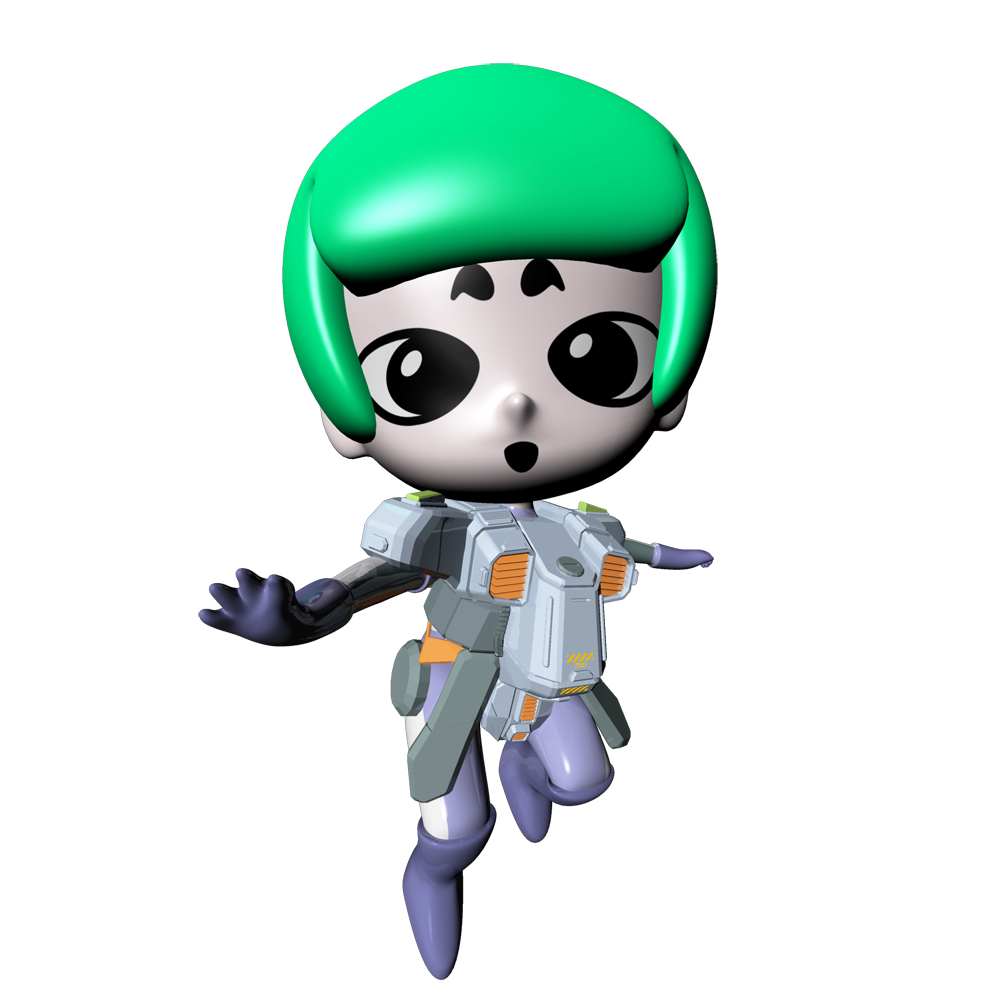
**World-building is, of course, very important for you, and contextualizes your output. For Research + Development, what environments — built and or discursive — were you envisioning?
DV: Research + Development represents a future that is far closer to our own present — if taken as part of a larger Aurora Memoria timeline, which was set in the fictional world ‘Fuji City,’ a neutropic, interactive megalopolis inspired by dating sims. It is the 2020 to Aurora Memoria‘s 2093. It represents a logical extrapolation of our current moment, in which public services that have been decimated or rendered untrustworthy by the government (or in the case of public defense, are untrustworthy by design) have become commodities put forth by a corporation reminiscent of Sony in 2002.
While the tracks ‘Absolute Flux’ and ‘Human Index’ are personal defense and healthcare systems (respectively), ‘Dream Navigator’ is a browser untethered by a fully-tiered, corporatized internet and ‘Ambiguity’ is a personal ozone Layer. All these services are at a premium and are only accessible to those with enough funds in their account. Within the world put forth by Research + Development, the characters and songs themselves serve as friendly faces that imbue these services with a necessary, commercially-viable humanity.
**I am interested in how the morphology of the characters of Research + Development were developed in accordance with the musical composition…
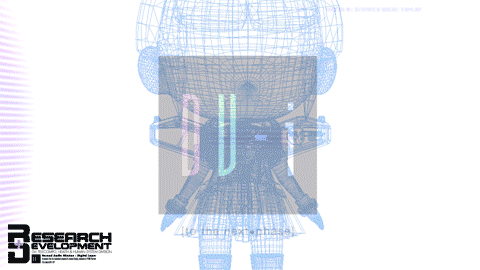
DV: The character designs for Research + Development, done in collaboration with designer Andrew Noel, were very much an intuitive, post-production process. While my primary template for the song-tans fashions were that of OS-tans (the influence of which is most visible in Dream Navigator-tan, who is very much inspired by Mac OS 9-tan, albeit far more bookish and inquisitive than the inspirational source), other influences like the MS Girls and Iria from the 1991 film Zeiram by Keita Amemiya nudged their way into the picture. Their gear and uniforms were designed while listening to the songs and thinking about what the titles could represent within the context of a corporate service. Their poses, facial features and hairdos, illustrated by Andrew, were also done in relation to the overall feel of the songs themselves, with their poses attempting to sort of capture the overall mood of each song. It was like a sort of anthropomorphic synesthesia.
**As you’re currently in Tokyo, what are you finding interesting about the city’s geography, and how does that factor into this mix?
DV: Tokyo’s architecture is perpetually inspiring to me — a lot of it is very much postmodern and firmly entrenched in Japan’s Bubble era, and usually involves some combination of circular windows, grid tiles, arches and marble. I personally feel like many Tokyo architects took early postmodernism to its logical extremes in comparison to the US, which devolved its postmodern sensibilities into denatured strip mall geometry, even as it has postmodernism in spades. In terms of this mix, the architecture provided a very appropriate context to a lot of the tracks, which are primarily composed of J-pop from the 80s and 90s. The best way I can describe it is that it makes the tracks feel a whole lot more ‘real,’ similar to that of listening to tracks produced in New York’s The Hit Factory in the 1970s/80s right next to the real deal! The energy feels that much more tangible.**













